As of yesterday the snowy plover nest near the mouth of Carpinteria Creek is still going strong, with the female bird incubating during the day and the male bird presumably around somewhere, though I haven’t seen him on my last few (brief) visits. But he’s good at disappearing, then popping up right underfoot when I’m not expecting him, so I assume he’s still around. Hatching is due any day now.
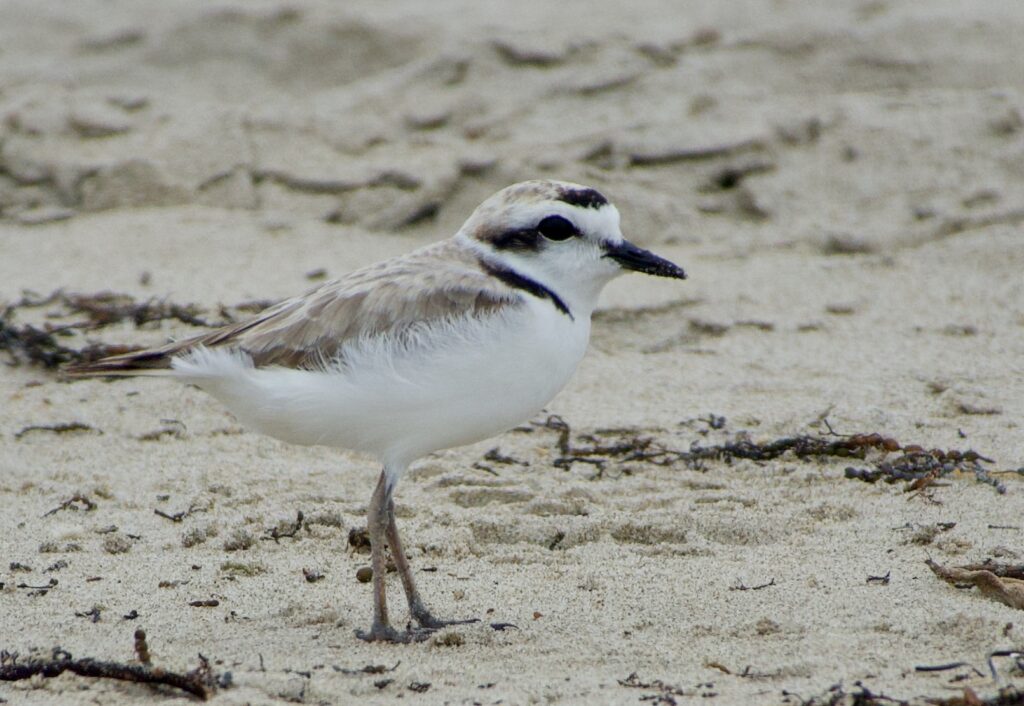
The birds made it through the Memorial Day weekend okay. The crowds got to be too much for the female plover on one day; she moved off down the beach where there were fewer people, but the male bird (who seems less skittish around people) took over nesting duties for at least the few hours I was watching that afternoon. Lately the female has been the one incubating when I’ve visited during the day.
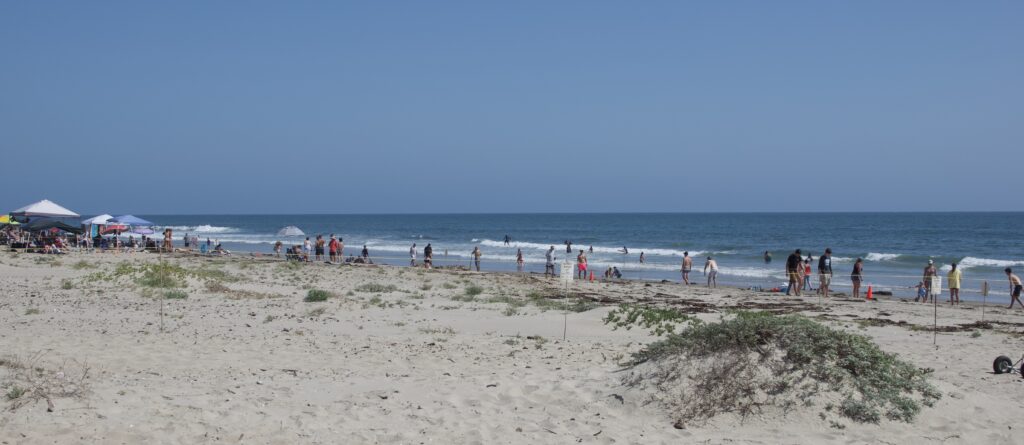
A number of people have helped out with signing up for plover watching shifts; thanks! It really is useful to have someone out there. What tends to happen is that a group of beachgoers will set up their beach chair and umbrella in the nice empty spot on the beach outside the roped-off area right in front of the nest. The female bird will pop off the nest and run around trying to distract them, but the humans won’t realize what’s going on. In that situation I’ve been able to approach and strike up a friendly conversation about the birds, and after assuring the beachgoers that a) I am just some random birdwatcher, not some official State Park person or ranger or anything, b) what they’re doing is totally legal; they’re allowed to be on the public beach as long as they’re outside the rope line, but c) snowy plovers are adorable and wouldn’t they like to help out with this historic nesting attempt?, I have a 100% success rate in getting people to move over a little such that the birds return to incubating.
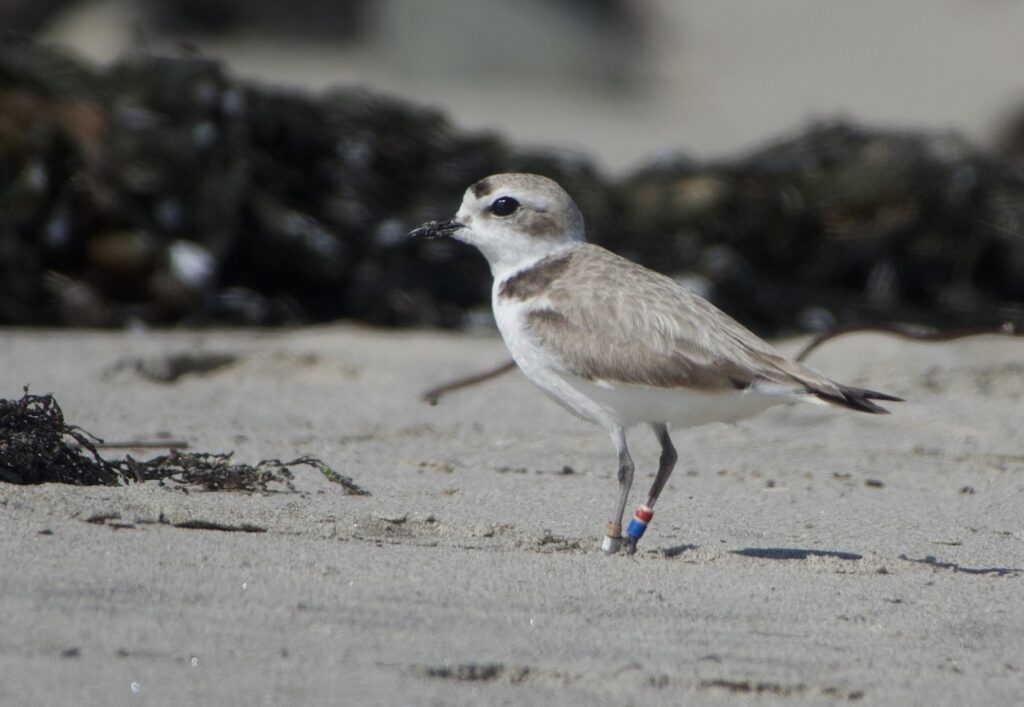
On one of my recent visits I ran into snowy plover mega-fan Bill Crowe. He got some really good photos of the female bird’s bands, and after studying those he now believes that the original color of the faded metal service band on her left leg was white. That would make the bird’s band combo nw:rb which, if correct, would mean she was originally banded at VAFB Surf North in 2013, making her roughly 8 years old.

That’s really old for a snowy plover; according to one study the mean lifespan of a snowy plover is 2.7 years. (The oldest known individual was a male that was 15 years old when last seen.)
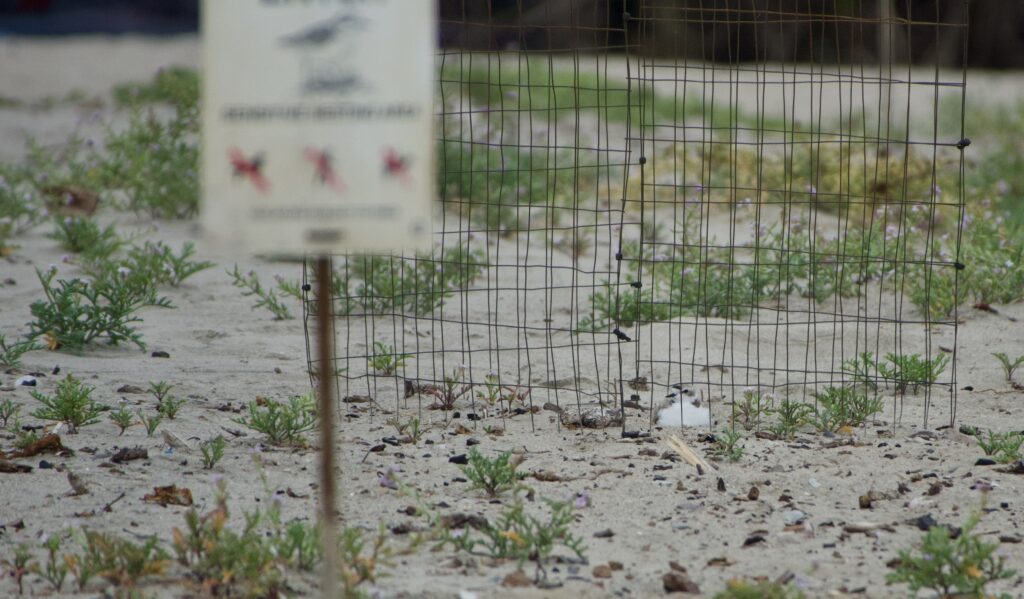
If you want to sign up for a slot in the plover watch schedule just send me an email at [email protected].
In other exciting news, Dave Ledig tells me that the pair of Black Oystercatchers at the harbor seal pupping site, whose nest was buried by blowing sand a few weeks ago, have started a new nest with at least one egg in it (the previous nest also had a single egg). This time the nest is on a ledge in the cliff face west of the seal haulout. Apparently it’s pretty hard to see, which is fine by me; with the end of the annual beach closure there will be more people walking the shore in that location, so I’d just as soon the birds were up out of the dogs-and-people zone.
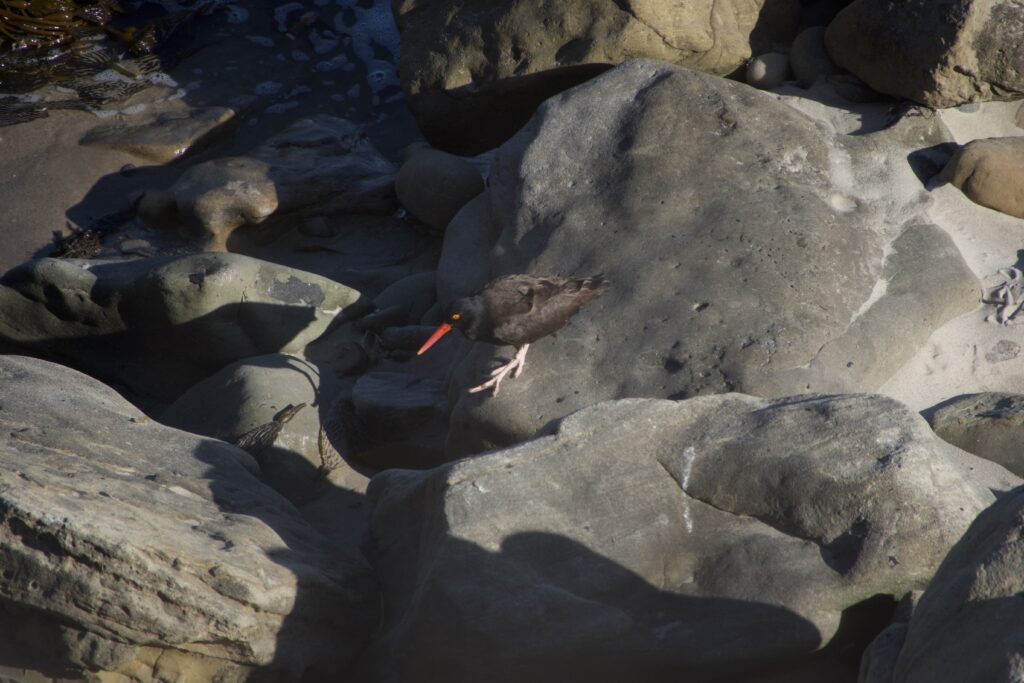
Wishing both sets of birds good luck in their historic attempts!